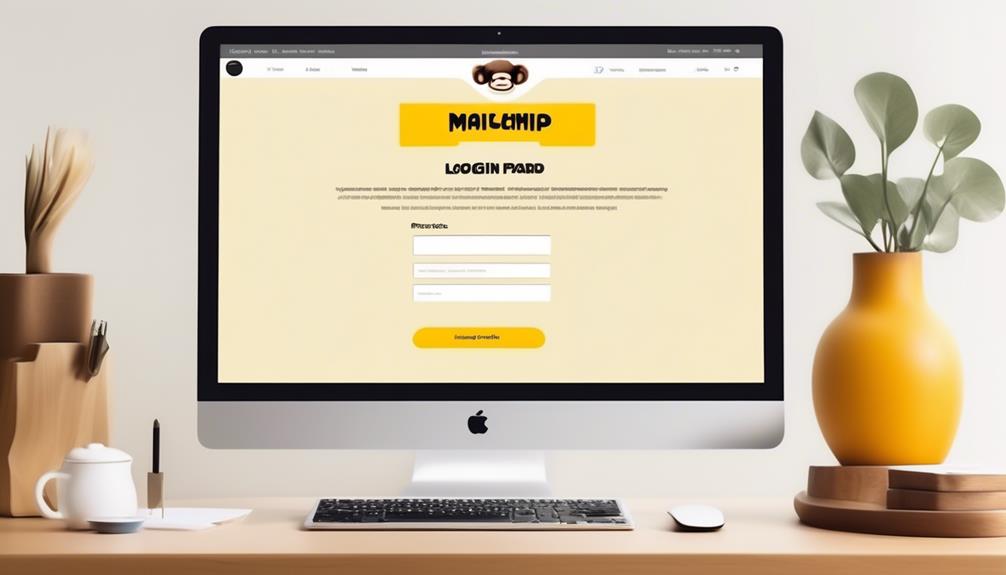Crafting a follow-up email to your professor requires a careful balance – you aim to be determined yet not overbearing. This technique is crucial in your academic path, and striking the perfect balance is essential.
So, how do we strike that balance and craft a follow-up email that's both respectful and effective? Well, let's explore some essential strategies that can help us navigate this important aspect of academic communication.
Key Takeaways
- It is important to send a follow-up email when a response has not been received after 1-2 weeks or when there is a deadline approaching or a time-sensitive matter.
- Waiting a few days before sending a follow-up email is recommended, but urgency or time-sensitivity may require following up sooner.
- When crafting a follow-up email, it is important to avoid common mistakes such as using generic subject lines and not providing clear calls to action.
- Politeness, professionalism, and gratitude should be maintained throughout the follow-up email, and it should clearly state the purpose of the follow-up.
When to Send a Follow-Up Email
If a response hasn't been received after a reasonable waiting period of 1-2 weeks, or if there's a deadline approaching or a time-sensitive matter, it's appropriate to send a follow-up email to a professor.
Sending a follow-up email in these circumstances is crucial as it ensures that important communication isn't delayed. It helps in maintaining a professional and respectful approach towards the professor while also showing the importance of the matter at hand.
It's important to remember that the purpose of a follow-up email is to seek help, request information, or convey something important, hence the timing of sending such an email is vital. Understanding the appropriate timing for sending a follow-up email demonstrates a grasp of professional email etiquette, which is a valuable skill for any individual seeking mastery.
It's also important to consider the professor's schedule and workload when determining the timing of the follow-up email. By doing so, the email is more likely to receive the attention it deserves, and the communication is more likely to be effective.
How Long to Wait for a Response

Professors' response times may vary due to their professional schedules and availability, influencing the appropriate duration to wait for a response. When considering how long to wait for a response from a professor, it's essential to exercise patience and avoid making assumptions about their availability.
While there's no hard and fast rule, waiting at least a few days before sending a follow-up email is generally recommended. However, the urgency or time-sensitivity of your inquiry should also be taken into account. If your email pertains to an upcoming assignment or an imminent deadline, it may be appropriate to follow up sooner.
Additionally, it's important to remember that professors, like anyone else, may forget to reply or accidentally delete emails. When crafting a follow-up email, maintaining a polite and professional tone is crucial. Expressing gratitude for their time and consideration in your initial email, and reiterating your appreciation in the follow-up, can go a long way in fostering positive and effective communication with your professor.
Avoiding Common Mistakes
When considering how long to wait for a response from a professor, it's important to be mindful of common mistakes to avoid when crafting a follow-up email. To ensure that your request receives a reply and to maintain a professional tone, it's crucial to be patient and allow ample time for the professor to respond.
Here are some common mistakes to avoid when writing a follow-up email to a professor:
- Subject Line:
- Using 'follow-up' in the email subject line can be seen as generic and uninformative.
- Email Content:
- Starting with just 'following up' and not adding value can make the email seem like a generic reminder.
- Not including a clear call to action can result in confusion and a lack of response.
It's also important to reiterate any important points and provide a polite follow-up as a reminder of your request. Additionally, not following up too quickly or being too pushy or demanding in your tone is essential to maintain a respectful and professional approach.
Crafting Polite Follow-Up Email Samples

Crafting a polite follow-up email to a professor requires thoughtful consideration and a clear, respectful tone to ensure effective communication.
When writing an email to a professor, it's crucial to maintain professionalism and politeness. Start with a concise and specific subject line that accurately reflects the content of the email.
Begin the email with a polite greeting, addressing the professor respectfully by using their title and last name.
Express gratitude for the professor's previous response or assistance, and then clearly state the purpose of the follow-up. This could include a request for clarification, a reminder about a previous inquiry, or a request for a meeting. Be sure to maintain a respectful and appreciative tone throughout the email.
End the email by thanking the professor for their time and consideration, and express your anticipation of their response.
Crafting a polite follow-up email is essential for maintaining a positive and professional relationship with your professors.
Here are some polite follow-up email samples that can serve as a guide for your communication.
Tips for Emailing a Professor
We find that applying proper email etiquette and timing is crucial when composing professional and polite emails to our professors. When emailing a professor, it's important to keep in mind the following tips:
- Subject Line: Ensure the subject line is clear and specific to the content of the email. This helps the professor quickly understand the purpose of your email.
- Use a clear and concise subject line that summarizes the content of the email.
- Avoid vague or generic subject lines that may be overlooked or misunderstood.
- Politeness and Clarity: Maintain a polite and respectful tone throughout the email and clearly communicate your purpose.
- Start with a courteous greeting and address the professor respectfully.
- Clearly state the reason for your email, whether it's a question, request for clarification, or follow-up on a previous discussion.
Frequently Asked Questions
How Do You Politely Follow up With a Professor in an Email?
We politely follow up with a professor in an email by expressing gratitude for their time.
We reiterate the purpose of our initial message, reminding them of the specific inquiry or request we made.
We kindly inquire about the status of our inquiry, asking if they have had a chance to review it or provide a response.
It's important to be patient and respectful, allowing a reasonable amount of time before sending a follow-up.
Avoiding any sense of entitlement or impatience is crucial, as we want to maintain a positive and professional relationship with the professor.
Our tone should convey professionalism and appreciation for the professor's expertise and time.
How Do You Politely Write a Follow up Email?
We understand the importance of writing a polite follow-up email.
It's crucial to maintain professionalism while expressing our eagerness for a response.
Our goal is to convey respect and appreciation for the professor's time while gently reminding them of our previous communication.
How Do You Follow up an Email After No Response?
When we follow up an email after no response, we can start by sending a polite and professional reminder. We should be respectful of the recipient's time and workload and avoid coming across as pushy.
It's important to keep the tone courteous and to express understanding of their busy schedule. A clear and concise message that conveys our eagerness for a response can prompt the recipient to address our initial email.
How Do You Remind a Professor to Reply to an Email?
We politely remind the professor to reply to our email by sending a brief follow-up message.
It's important to be respectful of their time and workload.
We can mention the original email and kindly ask if they've had a chance to review it.
A friendly tone and expressing appreciation for their attention to our message can help maintain a positive relationship.
Conclusion
In conclusion, when writing a follow-up email to a professor, it's important to approach it like tending a delicate garden.
Carefully nurture the relationship with polite and professional language, ensuring that the purpose of the email is clear and specific.
Avoid common mistakes like vague subject lines and be patient while waiting for a response.
By following these guidelines, you can cultivate a strong and respectful relationship with your professor.









